- News
- Reviews
- Bikes
- Components
- Bar tape & grips
- Bottom brackets
- Brake & gear cables
- Brake & STI levers
- Brake pads & spares
- Brakes
- Cassettes & freewheels
- Chains
- Chainsets & chainrings
- Derailleurs - front
- Derailleurs - rear
- Forks
- Gear levers & shifters
- Groupsets
- Handlebars & extensions
- Headsets
- Hubs
- Inner tubes
- Pedals
- Quick releases & skewers
- Saddles
- Seatposts
- Stems
- Wheels
- Tyres
- Tubeless valves
- Accessories
- Accessories - misc
- Computer mounts
- Bags
- Bar ends
- Bike bags & cases
- Bottle cages
- Bottles
- Cameras
- Car racks
- Child seats
- Computers
- Glasses
- GPS units
- Helmets
- Lights - front
- Lights - rear
- Lights - sets
- Locks
- Mirrors
- Mudguards
- Racks
- Pumps & CO2 inflators
- Puncture kits
- Reflectives
- Smart watches
- Stands and racks
- Trailers
- Clothing
- Health, fitness and nutrition
- Tools and workshop
- Miscellaneous
- Buyers Guides
- Features
- Forum
- Recommends
- Podcast
review
£585.00
VERDICT:
Impressively weatherproof design with consistent data figures
Modular design
Highly weatherproof
Can be used with or without oval chainrings
Consistent, repeatable data
Long battery life
Rechargeable
Charging cable is short
Left/right measurement issues
Cost of full system adds up
Weight:
152g
Contact:
At road.cc every product is thoroughly tested for as long as it takes to get a proper insight into how well it works. Our reviewers are experienced cyclists that we trust to be objective. While we strive to ensure that opinions expressed are backed up by facts, reviews are by their nature an informed opinion, not a definitive verdict. We don't intentionally try to break anything (except locks) but we do try to look for weak points in any design. The overall score is not just an average of the other scores: it reflects both a product's function and value – with value determined by how a product compares with items of similar spec, quality, and price.
What the road.cc scores meanGood scores are more common than bad, because fortunately good products are more common than bad.
- Exceptional
- Excellent
- Very Good
- Good
- Quite good
- Average
- Not so good
- Poor
- Bad
- Appalling
The Rotor INspider is a power meter that forms part of a modular setup that can allow fitment to almost any style of bike including road, gravel or mountain bike. It is very well made with precise tolerances and multiple options. It offers dual-sided power measurement, and a rechargeable battery with long lifetime. While the cost of the power meter itself is competitive, creating a full system is expensive.
The spider must be fitted to a compatible axle, with various diameters and widths available, and compatible cranks – Rotor's Vegast, Aldhu or new Aldhu Carbon road/gravel options are all compatible, as are its Kapic, Kapic Carbon and R-Raptor mountain bike options. I tested the INspider on a road bike with Vegast cranks, a 30mm axle and UBB (universal bottom bracket).
The spider has a 110x4 fitment and Rotor has a range of chainrings that will fit. Rotor is a company known for oval/elliptical chainrings so it is unsurprising that the INspider is one of the few power meters that is officially tested and compatible with oval chainrings. This is not a requirement, though – round chainrings are also fine to use.
Fitment
The modular system from Rotor is very easy to connect together, with very precise connection of the spider onto the axle, with the cranks then slotting onto the axle.
The overall system I have is reasonably common, with 50/34-tooth compact chainrings. It can also be used with a 1x setup, assuming the appropriate chainring is used.
There are more crank length options available than most manufacturers offer. The Aldhu cranks, for instance, are available in 150, 155, 160, 165, 167.5, 170, 172.5 and 175mm lengths. One big benefit of a modular system like this is that, should you change frames or bikes and need a different axle size, you can simply change the axle rather than needing a whole new crankset.
Rotor also provided the INspider Aero crown, which keeps the whole unit looking clean with all bolts hidden, but it's an extra £44.99. It isn't a necessity, though; without it, the only real difference is the bolt heads will be visible.
Initial setting up of the power meter was relatively simple. I used the Rotor app to register the device and then perform the initial calibration. The calibration process does involve a few more steps than other power meters, although it doesn't take much longer. Rotor says the device does not need to be calibrated every ride – every week is the suggestion.
To calibrate, first the power meter needs to be 'woken up' and this process can take a little more effort than others; a short ride was usually best, as I found some force was needed – simply spinning the pedals backwards was not sufficient. Once the unit is connected it needs to be calibrated twice. Upon the first calibration, ensuring the bike is upright and still with pedals vertical, a figure of '1000' should be shown, then the pedals need to be rotated backwards at least twice and calibrated again, with a different figure then shown. This can be done on any of the major headset units likely to be used to display the data.
Data accuracy
Claiming accuracy when testing in real life, outside of a lab is not possible, but I did compare the INspider against various others including a Tacx Neo2 power meter, Vector 3S pedals, Favero Assioma Duo pedals and 4iiii single-sided power meter. While there were small differences, the general reading was consistent throughout, with the Rotor INspider reading slightly higher in the majority of cases.
For outdoor rides I was able to compare directly against the Assimoa Duo pedals, which are similar in being dual-sided. Data was captured at the same intervals and compared. For one specific ride, almost three hours in duration, the average power difference between the two was 10 watts (195.6 watts for the Assioma vs 205.1 watts for the INspider), which works out as an average of 5.1%.
Comparing the data directly against the Assioma pedals, the INspider responds to power changes at a similar rate, and even smaller changes in power are equally well picked up, but it seems to remain higher at all times showing a consistent trend. This was evident on multiple rides and while calibrating all power meters on a regular basis.
There is no way of stating which is correct, but the data was consistent and repeatable, and when compared against other manufacturers the difference was always similar and within the same range each time. The largest difference seen when correctly calibrated was usually 5%, which equated to an average of approximately 10 watts between two different power meters. This is measuring the average power on rides of several hours or more.
The biggest and most important factor with any power meter is receiving data that is repeatable and here the Rotor INspider seems very good. The power seen on the head unit was at similar perceived levels of exertion and also, over multiple rides the data was comparable against other power meters, being a similar percentage above on each occasion.
The only issue here could be if you use power meters from different brands on different bikes, and specifically train to power and power zones. The same would be true of any power meter brand to an extent; you would need to know the difference and adjust the data/zones depending on which bike you are riding.
Left/right power
One area that I was not able to resolve was an imbalance in the recorded left/right power figures from the device. Despite lots of riding, testing and calibration attempts, I found that the figures provided were considerably different to 'normal' or a value I would consider to be correct. The figure varied, but was showing between 60/40 and 52/48 on most occasions, in favour of the left leg. When compared directly against a Favero Assimoa Duo on the same ride, the biggest difference seen for that was 48/52, in favour of the opposite leg, which is what I would normally expect to see.
Does it matter? For most riders I would say it is not important – overall average power and having a consistent unit is far more important. There are times or training sessions where a separate left/right display might be preferred, but I expect even this will be very minimal.
I did contact Rotor to see if someone was able to give a little insight into the difference, but at the time of writing I'm still waiting for a response.
Battery and charging
There are pros and cons to a rechargeable battery. The INspider's rechargeable battery has a claimed life of 200 hours, which is quite impressive. Recharging is via a USB connection lead with a magnetic attachment that connects to the front of the spider. I found the cable quite short, just 1m in length, and if you wish to charge from either a desk or a socket that isn't near the ground you might need an extension cable.
I had no issues at all with battery life. Although I did not attempt to run it flat, it was pushed close to 100 hours before recharging, with no problems and no loss of data. The only problem I can envisage is that, given the battery length is so good, you might simply forget to charge it. But if your head unit has a battery warning display, that should prevent that. If you did an average of 10 hours a week, that would mean it only needed recharging once every 20 weeks.
Torque 360
You can use the Rotor app to provide and store many details for riding, such as time, distance, elevation and all power details, although I suspect most riders would be more likely to choose to display this on a separate head unit.
One area that is different is the section called Torque 360, which dives into more detail and can show you a live track of where your power is provided around the full pedal stroke. It will also show your L/R power split, cadence and one big positive for riders who also use Rotor elliptical chainrings: the optimum chainring position (OCP). All Rotor oval chainrings have the option of five different positions, giving 5 degrees of adjustment, but the INspider-compatible chainsets have further 2.5-degree options for fine-tuning your OCP.
The Torque 360 function will analyse the data provided and give you a best OCP position for the oval chainrings, should you use them. Prior to this function, choosing the position was often a best-guess scenario, with most people, including myself when I used oval chainrings, selecting a middle ground.
If you do not use oval chainrings, the Torque 360 function of the app won't be as useful, simply showing how circular your pedal stroke is, should you wish to know.
Durability
Throughout testing I have used the INspider on some long rides, including a 500km non-stop challenge, and through some very wet and also incredibly cold weather. I had no issues at all, with no dropped signal, and no problems with the battery or connection to the head unit.
The INspider has a waterproof rating of IPX7, which means that it can withstand being submerged in water to a depth of a metre for 30 minutes which, as you can imagine, will be more than sufficient for riding. If Rotor wishes to add 'as tested in the wettest parts of Wales' to the product description, it can do, as it has stood up to some very poor weather over the test period.
Comparisons
If you already have compatible cranks and axle, adding the Rotor INspider at a cost of £585 (rrp) looks good value compared with two popular options that can also measure power from both sides, the Favero Assioma Duo pedals at £699, and Garmin's Vector 3 at £789.99. (Both are also available in single-sided versions for much less.)
If you're having to buy a new axle (£45), cranks (Vegast £112, Aldhu £225 or Aldhu Carbon £349) and chainrings, which vary in price depending on the size and setup, things start to look a little more costly. The full chainset as tested would total £932, including the aero cover and bolts.
> Power meters: 7 hidden hassles you’ll want to try to avoid
Some chainset-based power meters are also limited to needing specific cranks and/or chainrings, including SRAM's AXS power meter which is €446 for the power meter alone.
Weight
The INspider itself weighs 152g, but factor in that a standard 110x4 spider is 53g and the weight added is less than 99g.
In comparison, the Favero Assioma Duo pedal-based power meters weigh 306g for a pair, which is good for a standard pedal and reasonable even compared to a higher end pedals such as the Look Keo Blade Carbons at 236g for a pair.
Overview
While some questions remain over the L/R split of power, for overall measurement the INspider delivers a repeatable, hassle-free option for capturing your power metrics. The numbers given were consistent through a range of conditions, and it is also built to withstand the very worst weather conditions with a fully sealed unit and battery life between charges.
If you're looking for a power meter and prefer oval chainrings, then Rotor is one of the only manufacturers that officially allows them to be used without affecting data, but even if you prefer round rings the INspider offers consistent and reliable data in a package that is water tight and not too susceptible to wear. With the entire system being modular there are endless options of what type of bike and bottom bracket it can be fitted to, with the only proviso being that it will only work with a Rotor axle and cranks.
Verdict
Impressively weatherproof design with consistent data figures
road.cc test report
Make and model: Rotor INspider Power Meter DM 110x4
Size tested: 110x4
Tell us what the product is for and who it's aimed at. What do the manufacturers say about it? How does that compare to your own feelings about it?
Rotor says:
INSpider is a powermeter for all kind of bikes, for all kind of cyclists. INspider is a lightweight spider integrated powermeter that delivers a reliable, versatile and advanced watt measurement system. It is compatible with our Q RINGS® oval rings & all ROTOR modular cranks, both 1x and 2x, Road and MTB systems.
INspider has rechargeable battery with coated electronics and strong sealing for water resistance to measure power from inside the spider. It samples combined left-right data to precisely record power output, cadence, TORQUE 360, Optimum Chainring Angle (OCA) & a recommendation of Optimal Chainring Position (OCP).
Tell us some more about the technical aspects of the product?
Rotor lists:
COLOR - Black
COMPATIBILITY - ALDHU, ALDHU 24mm, KAPIC, KAPIC CARBON, Q RINGS, Q RINGS BCD 110X4, RHAWK, ROUND RINGS, RRAPTOR, VEGAST, VEGAST 24mm
BCD - 110x4
CONNECTION TYPE - ANT+™, Bluetooth® Smart
BATTERY LIFE - 200 hours
BATTERY MODEL - Rechargeable Li-ion , charger included
MATERIAL - 100% CNC-machined, 7075 aluminum alloy
MEASUREMENT TYPE - Both legs
OCA - Yes
TECHNOLOGIES - Alu7075, CNC, OCP Mount
AXLE WIDTH - 24 mm, 30 mm
DISCIPLINE - Cyclocross, MTB, Road, Triathlon
Rate the product for quality of construction:
9/10
Very well constructed with perfect spline connection to the Vegast chainset used to test. Small, neat package.
Rate the product for performance:
6/10
Overall power measurement was consistent, keeping similar range against other power meters when tested simultaneously. The gap seen in L/R power measurement is the only concern, which I do not believe gives a true reading. The overall average is, however, more reliable.
Rate the product for durability:
9/10
No problems seen, and with an IPX7 rating it should be extremely good regardless of the weather. It was tested in some really tough, very wet conditions.
Rate the product for weight (if applicable)
8/10
Rate the product for value:
8/10
For the power meter itself the value is good, especailly for riders who have a Rotor chainset currently or riders looking to use oval chainrings as this limits options. The price and value is different when axle, cranks and extras are factored in.
Tell us how the product performed overall when used for its designed purpose
The power meter seems to work well and was reliable. There is nothing worse than a power meter that stops functioning mid-ride and that never happened. The L/R balance seems well out.
Tell us what you particularly liked about the product
Long battery life, no issues with riding through tough conditions, and the easy-to-use rechargeable battery, although a longer lead would have been good.
Tell us what you particularly disliked about the product
L/R power balance seemed out. A little involved to calibrate.
How does the price compare to that of similar products in the market, including ones recently tested on road.cc?
The Garmin Vector 3 and Favero Assioma dual-sided pedal power meters are perhaps the closest competition. The Rotor INspider is cheaper for just the power meter, although if a full chainset is needed the cost adds up.
Did you enjoy using the product? Yes
Would you consider buying the product? Yes, although I would hope to know why the L/R balance is out.
Would you recommend the product to a friend? Yes, and especially for those who prefer oval chainrings.
Use this box to explain your overall score
The INspider was very reliable and the long battery life is brilliant. I personally don't train with sessions for different L/R power outputs or single leg drills so the difference seen was not too significant, but I would like to know why this was showing. The calibration process is a tiny bit more involved than with others, but no hassle.
About the tester
Age: 35
I usually ride: My best bike is: Cannondale SystemSix
I've been riding for: Over 20 years I ride: Every day I would class myself as: Expert
I regularly do the following types of riding: road racing, cyclo cross, sportives, mtb, Lots of gravel style riding
Matt is an endurance nut who loves big rides and big events. He's a former full-time racer and 24hr event specialist, but now is also happy riding on or off-road and loves long adventures and audax events.
Latest Comments
- Surreyrider 13 min 8 sec ago
Rather odd to describe them as the pros' favourite race wheels.
- mdavidford 15 min 27 sec ago
Delete as applicable? "It's a page."
- Karlt 18 min 47 sec ago
In January I came off on a low speed bend just like that - no warning; front wheel just went. Long story short I'm waiting for physios to clear me...
- Rendel Harris 19 min 23 sec ago
It would be interesting to see what happened if a disabled person who uses an ebike as a mobility aid took legal action against TfL on the grounds...
- mdavidford 23 min 11 sec ago
Looking at that, I wonder if they were actually just making a very bad job of reversing around the corner and cut across the ramp.
- andystow 35 min 44 sec ago
I'm reminded of when my sons bought me this mug for Christmas when they were teenagers. Baller.
- EK Spinner 1 hour 38 min ago
even if they do cover all the physical losses, it will take months to re-fit and re-stock the shop, and all with zero income in the meantime.
- Born_peddling 2 hours 2 min ago
And if you're at least local or can afford rental prices in bath for the time you'll be required for 🤷♂️
- Pura Velo 2 hours 34 min ago
A shame to see a long standing name from the custom wheel building community fall victim to the industries woes. ...












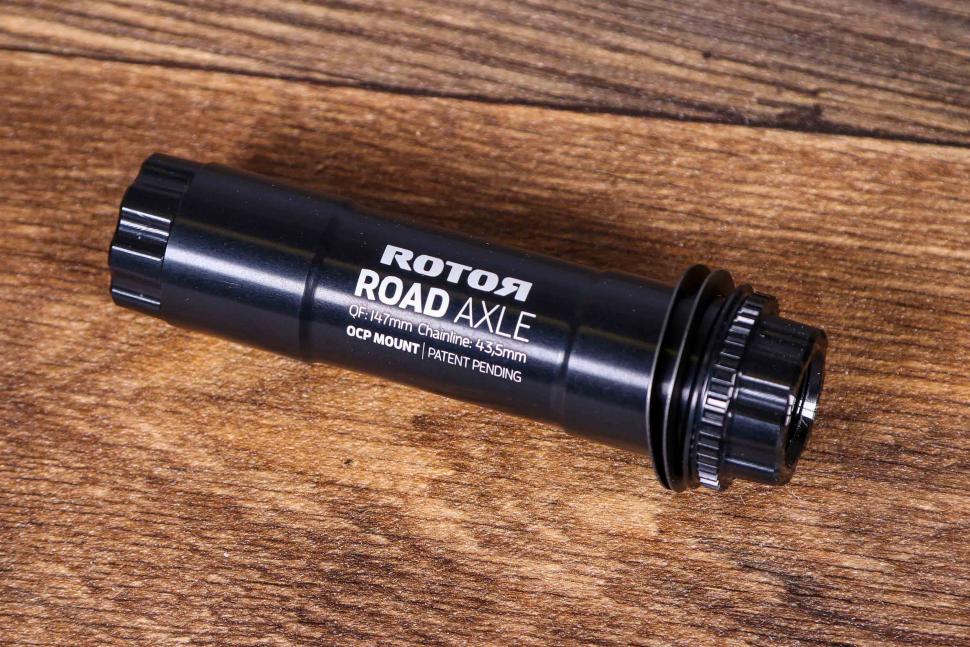
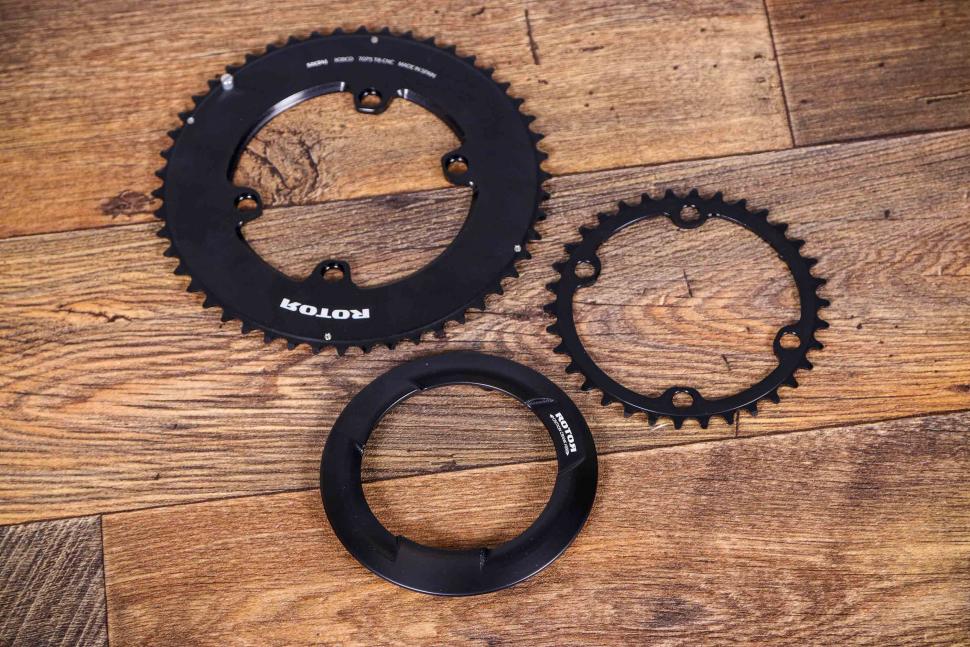


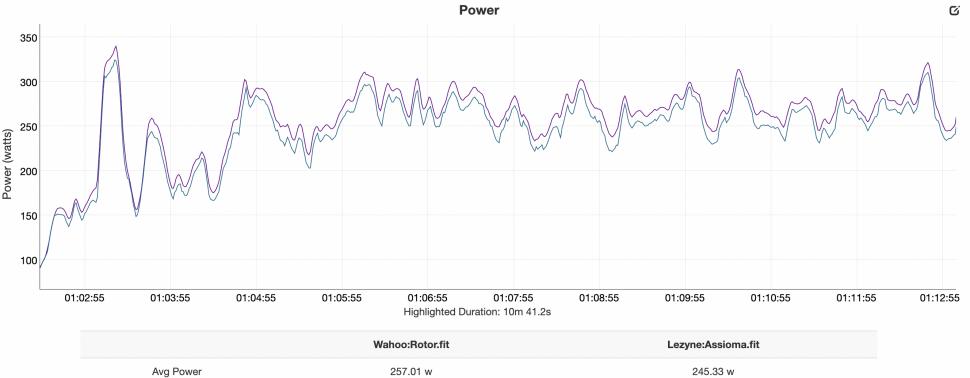


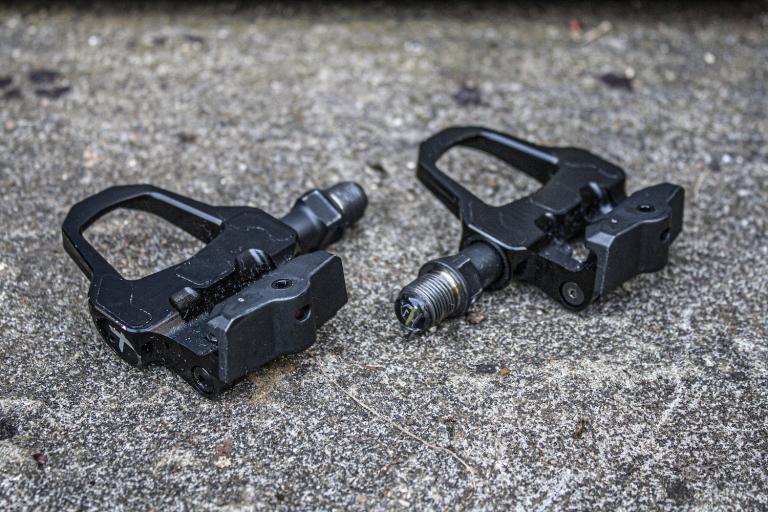
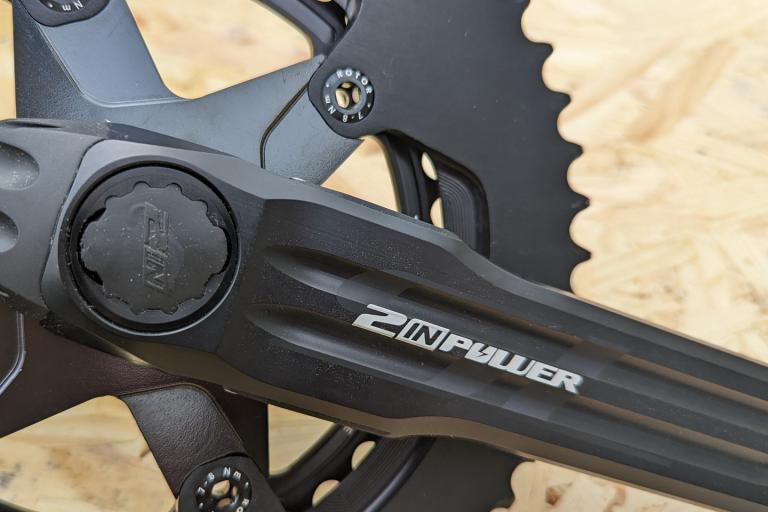


Add new comment
4 comments
This is a very reliable powermeter, don't know where you get the performance issues from. One of the bests, cheap compared to the 2inPower and Power2max and other crank/spider based PM, and is also very light.
The software do suck though
A better comparison, instead of pedals, for this would be vs the consideraby cheaper Power2Max NG ECO spider, am not sure why you would pick this up over that really.
Not sure that product is an entirely fair comparison but its a good point. The SRAM Quarq ones would have been another good comparison.
£600 for a 5% power increase? Bargain